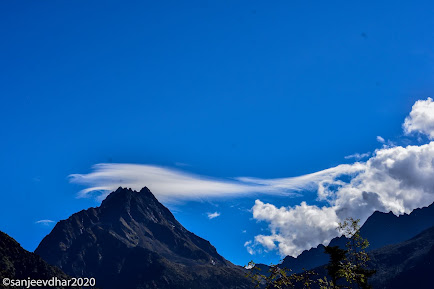Chumi Gyatse
HIDDEN BEAUTY
CHUMI GYATSE
The itinerary for a trip to Tawang by most of the tourists normally involves a day or two of visiting monasteries around Tawang, along with the customary visits to Bumla, Nuranag falls, Sangetsar Lake and if you have the time, visit to Zimithang and Lumla. However, very few tourists venture to the areas East of Tawang. This area has very less population with very few villages/Hamlets and you only get to see isolated grazier huts as you drive along. This untouched pristine beauty with various gems of nature is still largely unexplored and is not on the list of most of the tour operators. One of the most awe inspiring gems of Eastern Tawang which is a must visit for its sheer beauty, religious significance and it's uniqueness is Chumi Gyatse water falls.
Chumi Gyatse (Chu-water, mig-eye, Gyatsa'- around hundred), also called colloquially as Holy Water Falls is a highly revered pilgrimage site for the local Monpas due to its association with Guru Padmasambhava.
As per popular belief, the water of these falls descends
directly from the sky and has divine healing powers for
most bodily ailments and provides relief from ‘Sorrow and Pain’.
Religious Folklore
There are different local folklores as to the
origin of the waterfalls, which emerge from the cliff face with no apparent
source from top of the mountain.
Getting There
The trip to Chumi Gyatse Falls from Tawang can be undertaken by combining it with the visit to Bumla.
 .
. In case you want to spend time and soak in the beauty of this beautiful hamlet, there are home stays where you can stay for the night or if you are short on time you can head back to Tawang the same day after visiting Chumi Gyatse. Some tour operators also provide option of camping in tents where you can enjoy the open night skies along the banks of the river.
From there move to Chumi Gyatse takes about another one hour, which involves a bit of hiking along a picturesque route. Chumi Gyatse is located in the narrow valley, characterised by steep cliffs and fast rapids of Shou Chu river close to the India- Tibet- China border.
There is a Prayer Hall with the statue of Guru Padmasambhava at the foot of the waterfalls which provides a serene place to sit and be one with the nature while you are at the waterfalls. A tourist facility centre is also being planned by the state govt in the near future.










Amazing. I am from Tezpur
ReplyDelete